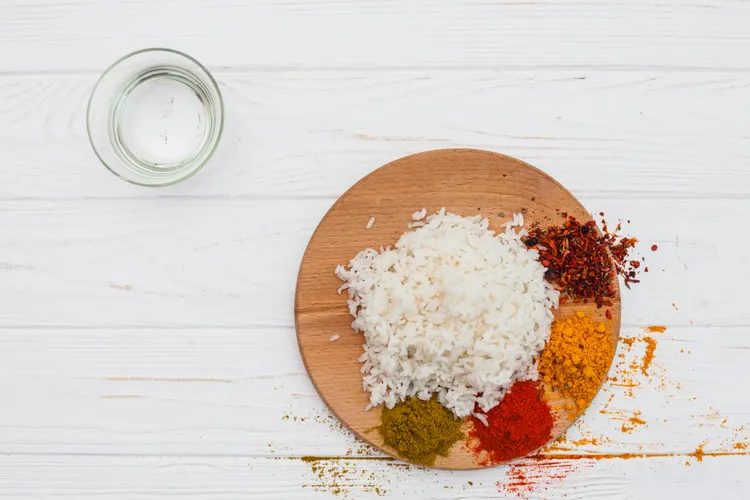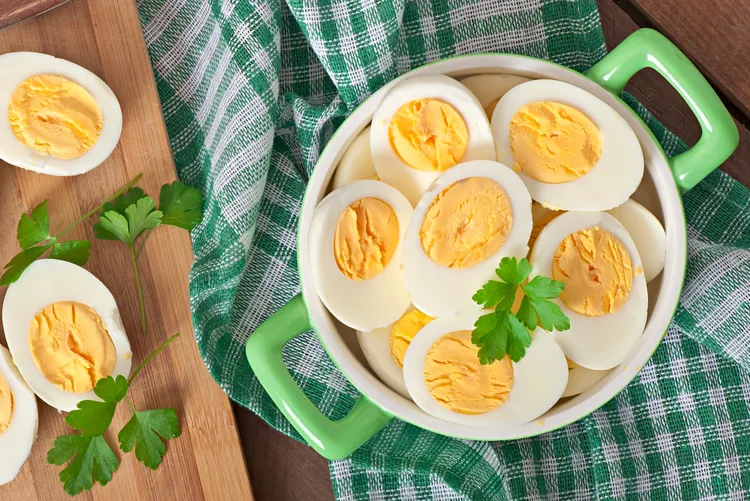Top 10 Veggies Highest in Protein: Power Up Your Plant-Based Nutrition
When you think of protein, meat, eggs, or tofu might come to mind, but vegetables? Yes, veggies can pack a surprising protein punch! For those looking to boost their protein intake - whether you’re vegan, vegetarian, or just aiming to eat more plants - certain vegetables stand out as nutrient-dense, protein-rich options. Protein is essential for muscle repair, hormone production, and overall health, and these veggies deliver it alongside fiber, vitamins, and minerals. Let’s uncover nature’s protein powerhouses!

Why Protein from Vegetables Matters
Protein is a macronutrient made of amino acids, the building blocks for muscles, enzymes, and hormones. While animal sources are often protein-dense, vegetables offer a unique advantage: they combine protein with fiber, antioxidants, and low calories, making them ideal for health-conscious eaters, weight management, and sustainable diets. Plant-based proteins are also linked to lower risks of heart disease and better gut health, per a 2020 study in The American Journal of Clinical Nutrition. Below, we rank the top 10 veggies by protein content (per cup, cooked, unless noted), with tips and recipes to make them delicious.
- Edamame: The Protein Superstar
- Protein: 18.5 g per cup (cooked)
- Why it’s great: Edamame (young soybeans) is a complete protein, containing all nine essential amino acids. It’s also rich in fiber, iron, and magnesium, supporting muscle recovery and satiety.
- Other benefits: High in folate for cell repair and isoflavones for heart health.
- How to enjoy:
- Steam and sprinkle with sea salt for a snack.
- Toss into stir-fries or salads.
- Blend into hummus for a protein-packed dip.
- Recipe: Edamame Buddha Bowl
- Combine 1 cup cooked edamame, ½ cup quinoa, 1 cup roasted broccoli, and ¼ avocado.
- Drizzle with 1 tbsp tahini and lemon juice.
- Why it’s healthy: 25 g protein per bowl, plus fiber and healthy fats.
- Science: A 2019 study in Nutrients found soy-based proteins like edamame improved muscle synthesis in plant-based diets.
- Lentils: The Legume Leader
- Protein: 17.9 g per cup (cooked)
- Why it’s great: Technically a legume, lentils are often prepared as a vegetable and are loaded with protein and fiber, keeping you full for hours. They’re also rich in iron, aiding oxygen transport.
- Other benefits: Folate and manganese support energy production.
- How to enjoy:
- Make a hearty lentil soup with carrots and spinach.
- Use as a base for veggie burgers.
- Toss into salads for a protein boost.
- Recipe: Lentil Veggie Soup
- Science: A 2021 study in Journal of Nutrition linked lentil consumption to improved satiety and weight management.
- Peas: The Sweet Protein Pop
- Protein: 8.6 g per cup (cooked)
- Why it’s great: Green peas are sweet, versatile, and surprisingly high in protein for a vegetable. Their fiber and vitamin C support digestion and immunity.
- Other benefits: Vitamin K for bone health and antioxidants for inflammation.
- How to enjoy:
- Add to pasta dishes or stir-fries.
- Blend into a creamy pea soup.
- Snack on fresh peas raw.
- Recipe: Pea Smash
- Science: A 2018 study in Food Science & Nutrition found peas improved satiety compared to starchy veggies.
- Brussels Sprouts: The Cruciferous Contender
- Protein: 5.6 g per cup (cooked)
- Why it’s great: These mini cabbages are protein-packed for a leafy veggie, with fiber and sulforaphane to support detox and satiety.
- Other benefits: Vitamin C and K for immunity and bone health.
- How to enjoy:
- Roast with olive oil and garlic for a crispy side.
- Shred into a salad with apples and walnuts.
- Skewer and grill for a BBQ twist.
- Recipe: Roasted Brussels Sprouts
- Science: A 2020 study in Nutrition linked cruciferous veggies to reduced inflammation, aiding muscle recovery.
- Spinach: The Leafy Protein Power
- Protein: 5.3 g per cup (cooked)
- Why it’s great: Spinach is low-calorie (41 per cup, cooked) and protein-rich for a leafy green, with magnesium to support muscle function.
- Other benefits: Iron for energy and nitrates for better exercise performance.
- How to enjoy:
- Blend into smoothies with fruit and protein powder.
- Sauté with garlic as a side.
- Add to soups or casseroles for bulk.
- Recipe: Spinach Smoothies
- Science: A 2019 study in Nutrients found spinach nitrates improved workout endurance.
- Kale: The Nutrient-Dense Dynamo
- Protein: 4.3 g per cup (cooked)
- Why it’s great: Kale’s protein content pairs with fiber and calcium, making it filling and supportive of muscle and bone health.
- Other benefits: Antioxidants like quercetin reduce inflammation.
- How to enjoy:
- Massage with olive oil for a tender salad.
- Bake into crispy chips with sea salt.
- Blend into green smoothies.
- Recipe: Kale Protein Salad
- Science: A 2019 study in Journal of Clinical Nutrition linked leafy greens to better muscle maintenance.
- Asparagus: The Elegant Protein Source
- Protein: 4.3 g per cup (cooked)
- Why it’s great: Asparagus is low-calorie (40 per cup) and protein-rich, with folate to support energy production and muscle repair.
- Other benefits: Diuretic properties reduce bloating.
- How to enjoy:
- Grill with lemon zest for a zesty side.
- Wrap in lean turkey for a snack.
- Chop into stir-fries or omelets.
- Recipe: Asparagus Salad
- Science: A 2018 study in Nutrients found asparagus supported gut health, aiding protein absorption.
- Artichokes: The Fiber-Filled Gem
- Protein: 4.2 g per medium artichoke (cooked)
- Why it’s great: Artichokes are protein-packed for a veggie, with fiber to promote fullness and support gut health.
- Other benefits: Cynarin aids liver function and digestion.
- How to enjoy:
- Steam and dip leaves in Greek yogurt sauce.
- Add hearts to salads or pizzas.
- Blend into a creamy dip.
- Recipe: Artichoke Spinach Dip
- Science: A 2020 study in Journal of Functional Foods linked artichokes to improved digestion and satiety.
- Corn: The Sweet Grain-Veggie Hybrid
- Protein: 4.2 g per cup (cooked)
- Why it’s great: Corn, often considered a vegetable, offers protein and complex carbs for sustained energy, plus fiber for fullness.
- Other benefits: Lutein and zeaxanthin for eye health.
- How to enjoy:
- Grill on the cob with a sprinkle of chili powder.
- Add kernels to salads or tacos.
- Make a corn salsa with tomatoes and cilantro.
- Recipe: Corn Salads
- Science: A 2019 study in Food Chemistry found corn’s protein supported muscle maintenance in active adults.
- Broccoli: The All-Around Winner
- Protein: 3.7 g per cup (cooked)
- Why it’s great: Broccoli combines protein with fiber and sulforaphane, which may boost metabolism and support muscle recovery.
- Other benefits: Vitamin C and K for immunity and bone health.
- How to enjoy:
- Roast with olive oil and garlic.
- Steam and toss with lemon and almonds.
- Blend into soups or smoothies.
- Recipe: Roasted Broccoli
- Science: A 2020 study in Journal of Nutrition linked broccoli to reduced inflammation and better fat metabolism.
How to Maximize Protein from Veggies
- Combine Plant Proteins: Pair veggies like lentils and corn to create complete proteins with all essential amino acids.
- Add Small Amounts of Animal Protein: Boost protein by pairing veggies with eggs, fish, or lean meat if not fully plant-based.
- Cook Lightly: Steam or sauté to preserve protein and nutrients; overcooking can degrade amino acids.
- Include Healthy Fats: Pair with avocado or olive oil to enhance nutrient absorption (e.g., fat-soluble vitamins in spinach).
- Aim for Variety: Rotate these veggies to get a range of amino acids and micronutrients.
- Portion Up: Since veggie protein is less dense than meat, eat larger portions (e.g., 2 cups spinach or 1 cup lentils).
- Supplement Wisely: If struggling to meet protein needs, consider a plant-based protein powder for smoothies.
Common Pitfalls and How to Avoid Them
- Incomplete Proteins: Most veggies lack all essential amino acids. Combine with grains (quinoa, rice) or legumes for balance.
- Overcooking: Boiling can leach protein and nutrients. Opt for steaming or roasting.
- Low Calorie Intake: High-veggie meals are low-calorie, so pair with healthy fats or carbs to sustain energy.
- Boredom: Avoid veggie fatigue by experimenting with spices, herbs, or new recipes.
- Sodium Overload: Watch added salt in dishes like edamame or soups; use herbs for flavor.
Lifestyle Tips for Protein Benefits
- Strength Training: Pair high-protein veggies with exercise to maximize muscle synthesis, per a 2019 study in Sports Medicine.
- Hydration: Protein metabolism requires water. Aim for 2–3 liters daily, per a 2020 study in Journal of Sports Sciences.
- Sleep: Poor sleep impairs protein utilization. Aim for 7–9 hours, per a 2018 study in Sleep Medicine.
- Gut Health: A healthy gut improves protein absorption. Include fermented foods like kimchi, per a 2020 study in Gut Microbes.
Veggies for Protein and Beyond
These top 10 high-protein vegetables - edamame, lentils, peas, and more - are proof that plant-based eating can fuel your protein needs while delivering fiber, vitamins, and flavor. Whether you’re building muscle, managing weight, or simply eating more sustainably, these veggies are versatile, delicious, and nutrient-packed. Start by adding one or two to your meals this week, using the recipes above for inspiration. Your body, energy levels, and taste buds will thank you.
Challenge: Try one high-protein veggie recipe this week or aim to include at least one of these veggies in every meal. Share your favorite dish and let’s inspire each other to power up with plants!









